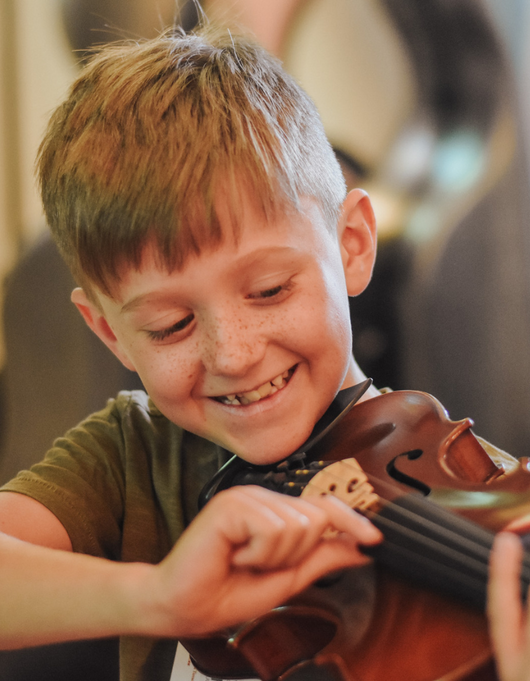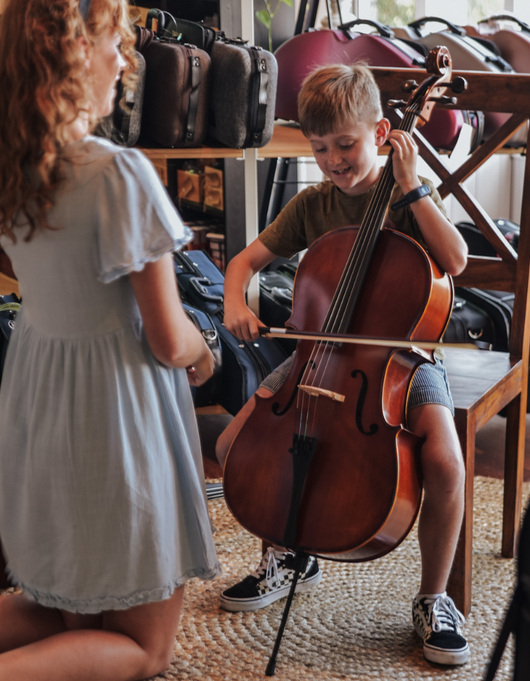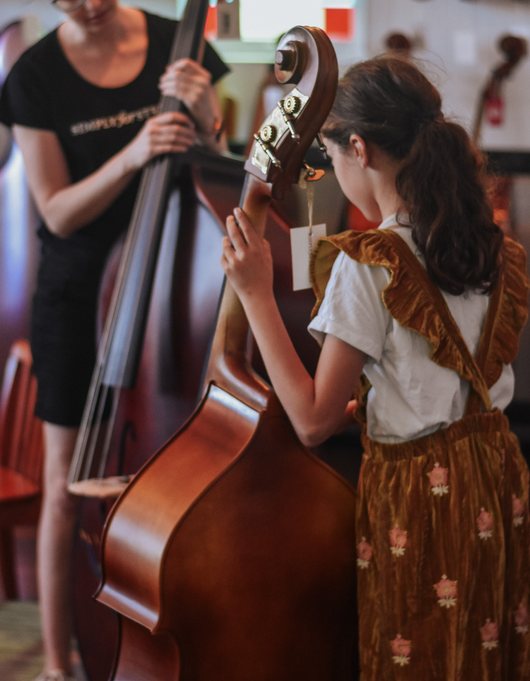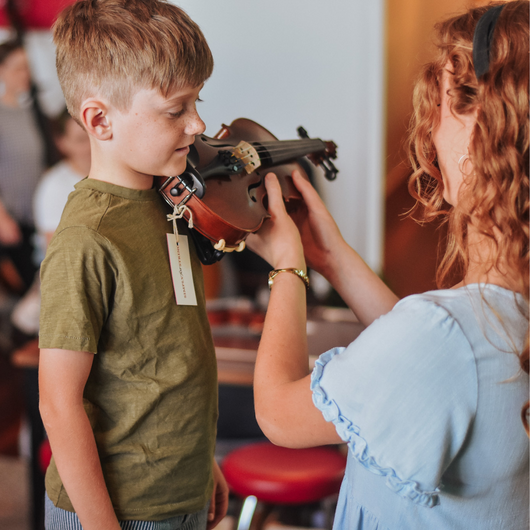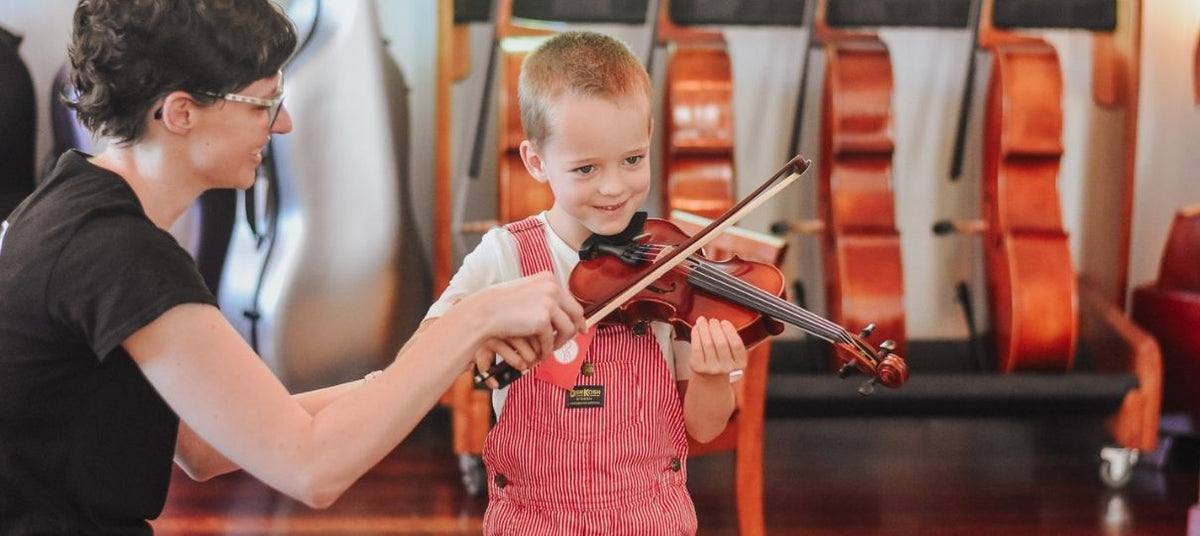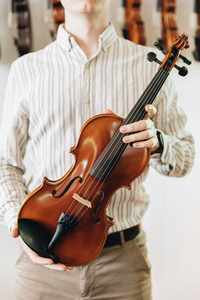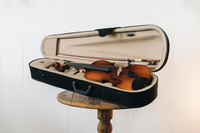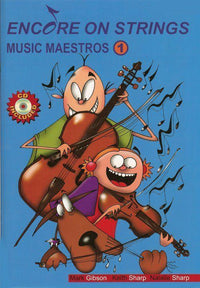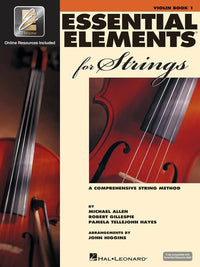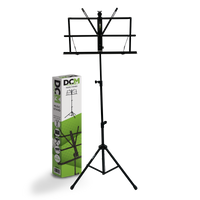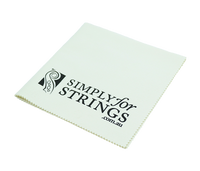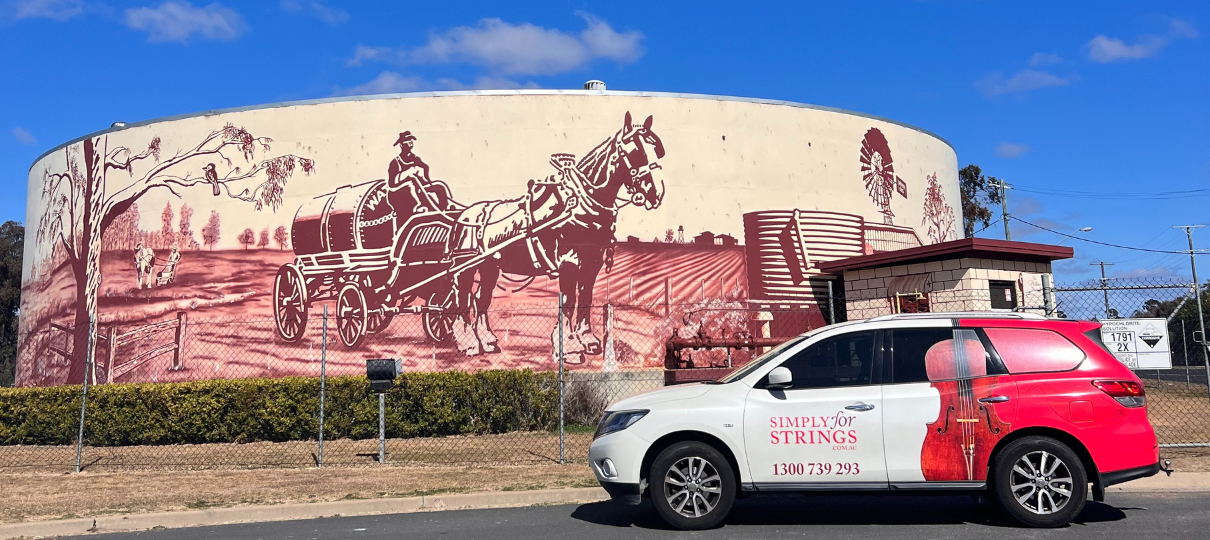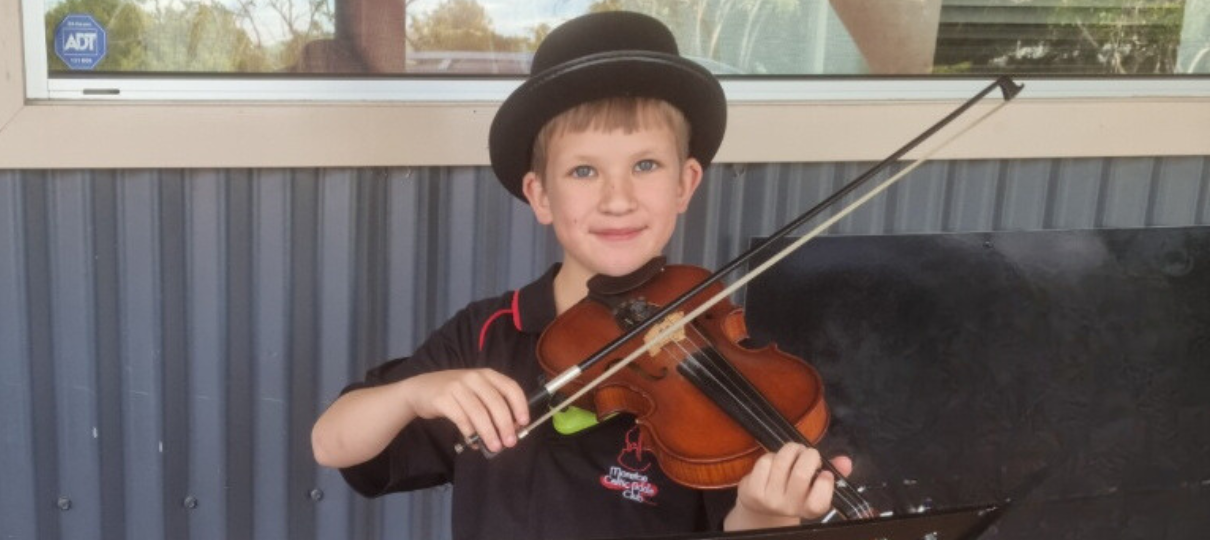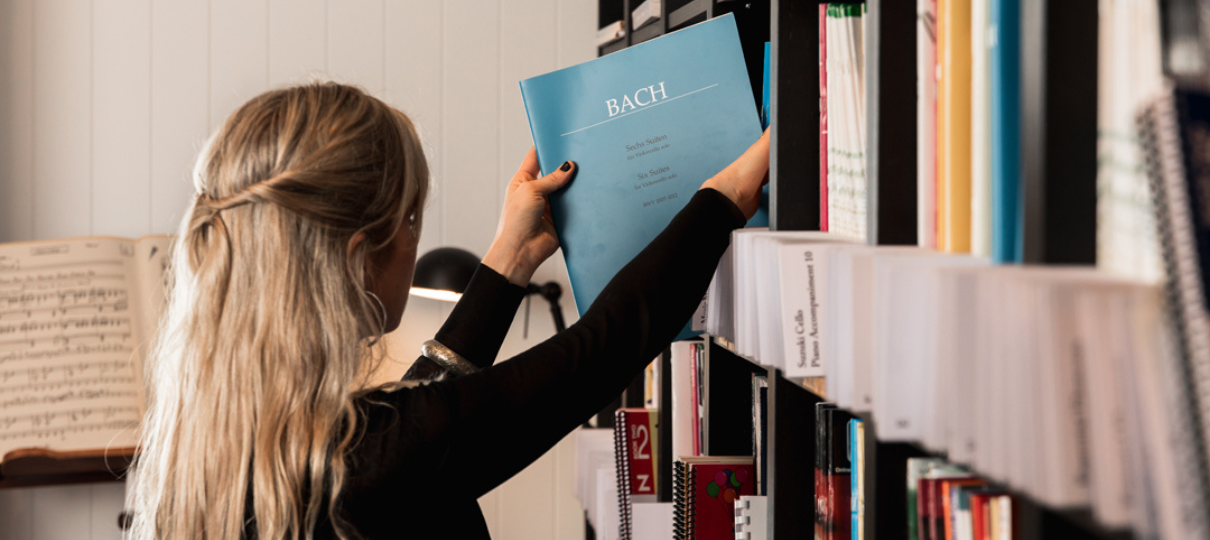Buying a violin for the first time – whether for yourself or your child – can be a daunting task. There are so many options to consider and it can be hard to know where to start.
To ensure that you’re getting the best value for money at this early stage in your musical education, we’ve put together some key pointers for selecting the right beginner’s violin.
1. A professional set up is essential!
Nearly every instrument has the potential to be as comfortable for the player as possible, however, often, instruments can be neglected at one of the most vital stages of their lives, the set up. Make sure that the violin you are purchasing is set up correctly so that it’s ready to play. Plenty of vendors out there will be happy to sell you an instrument straight from the box with no adjustments, and this means that the sound and technique learned while playing will both be poor.
We recommend only purchasing an instrument that has been professionally adjusted and inspected. A poorly adjusted and inspected instrument is very likely to increase ongoing costs and potentially result in bad technique. Competitive price is not always true value. Simply for Strings combines both competitive prices and quality instruments which will not only last longer, but enhance your performance skills as well. Happy instruments make happy players.
A professional set up should include adjustments to the:
- Bridge
- Nut
- Fingerboard
- Pegs
- Soundpost
- Tailpiece
- String Adjusters
- Chinrest
Each part needs to be fitted, adjusted or fine-tuned to ensure comfort while playing, a balance of tone quality and volume, and clarity of sound that is free from buzzing.
We include a professional set up - at no extra cost - with every instrument we sell.
2. Getting the size right
The easiest way to fall in love with playing the violin is to be comfortable doing it. The wrong-sized instrument can cause physical pain while performing, which will certainly lead to the novice player giving up on practice – or playing altogether!
Violins come in sizes that are measured in fractions. A full size violin is listed as 4/4. Other common sizes include ¾, ½ and ¼. There are much smaller sizes available (including 1/8, 1/10 or 1/16) that line the shelves at Simply for Strings.
Your violin teacher should be able to help you with sizing, or you can view our sizing guide or next to all of our products.
Unfortunately, you can’t “grow” into a violin, so buying one that is too big in the hope that it will save you some upgrading in the future just won’t work. If your child is quite young and you’re concerned that they will grow out of their violin too quickly, you should consider buying a cheaper, second-hand violin, or perhaps renting one instead. Learn more about our rental program.
Quick tip: If your child is left-handed, you still purchase a "normal" right-handed violin.
3. Make sure you’re covered
Whether you decide to purchase a new or a second-hand instrument, it’s important that the instrument you purchase is covered under warranty. The warranty should cover the timber and manufacturing quality and safeguards against any structural issues that may arise.
If you’re going for the second-hand option, you should also make sure that the seller has a current second-hand dealer’s license before you buy. This will ensure that you are protected by all applicable consumer guarantees related to second-hand goods in your state. Learn more about our warranty.
4. Buy the whole outfit
A violin might seem “cheap” online but once you buy all of the required extras, the costs can really start to add up. When you buy your violin, make sure it comes in a package with a case and bow (called an outfit). This will save you some money and also means that you’re ready to go!
Essentials not included in your outfit: rosin, shoulder rest, cleaning cloth, and many teachers ask students to upgrade the strings for best results.
A few other items you might considering buying to make the most of your violin setup include:
- Beginners’ sheet music
- Music stand
- Tuner
- Learning Aides (such as fingerboard tape and bow grips)
- Spare set of violin strings
- String instrument cleaning kit
Shop all of our instrument accessories.
5. Hit the mark on price
You should expect to spend at least $350-$750 if you want a well-made student instrument. This price range also ensures that you should receive a nice sounding instrument. You should expect to spend at least $300 if you're purchasing a well-made second hand instrument.
6. Get branded
Buying a violin that is made by a respected brand should further assure you that you’re getting a good quality instrument. We recommend a few good quality brands that you can find under the beginner violins range of our store. Our best-selling beginner violins are the Prelude, Arioso and Virtuoso ranges. If you prefer a European-made violin, the Gliga range, handcrafted in Romania, is the most popular.
Here at Simply for Strings, we offer our customers free shipping for all violins purchased through our online store. Before they are shipped, all of our violins undergo a final inspection by the team at Simply for Strings. This assures that the instrument meets or exceeds all specifications.
Have some more questions? Get in touch with the string instrument experts at Simply for Strings today.



